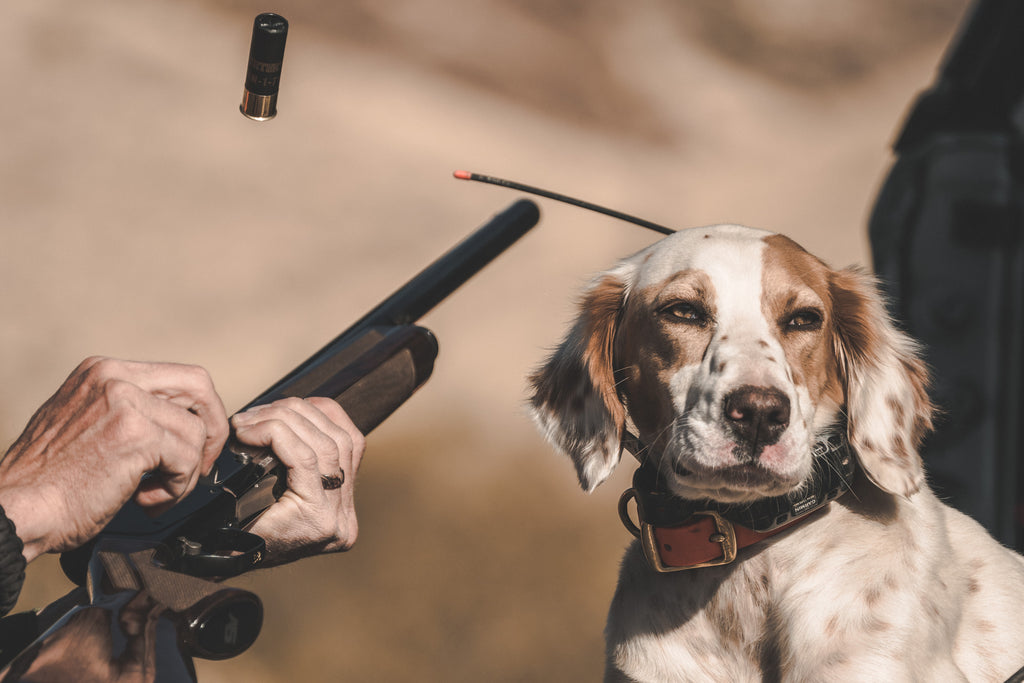Shotgun Shell Sizes

There are many different shotgun shell sizes out on the market. The size isn’t just the gauge but also includes the length of the shell. It is important to know the size shotshell your shotgun was chambered for, as two nearly identical 12 gauge shotguns might shoot different length shells.
Shotgun Gauges
The shotgun gauge designation is unique and odd. Each size or gauge stems from the diameter of the bore and the number of lead balls or spheres that it takes to weigh a pound. If you made lead balls the diameter of a 12 gauge bore, it would take 12 of them to add up to a pound. Meaning that the lower the number gauge, the larger the shell. 10 gauge is larger than 16, which is larger than 28.

These numbers are theoretical anymore, as this system was created in the muzzleloading days before choke boring became popular. It is important to note that these different sizes have no relation to the shot size used in each gauge.
10 Gauge
The 10 gauge shotgun is well known worldwide as an excellent and heavy-hitting goose and waterfowl gun. This monstrous shell was once the most popular gauge in the United States, as countless muzzleloaders and early breechloaders were bored for it. Popularized and standardized by Winchester in 1932, it has a cult following.

Being the largest shotgun shell you can hunt with legally here in the states, it packs a punch. Shooting a heavy 2+ ounce load of shot out of a 3 ½” shell will stop just about anything in its tracks. The heavy recoil makes most people shy away from it, but those who use them regularly swear by them. It is harder to find 10 gauge ammo than most other gauges, but it is available and still being produced.
12 Gauge
The 12 gauge is easily the most popular and versatile shotgun gauge today. If you only own one shotgun, it should be a 12 gauge. While the sub gauges have had a resurgence as of late, the twelve is still king. Many different length shells are available, making it extremely useful for everything from quail to turkey.

Many different loads are available for the twelve, making it extremely versatile. 2-¾ length shells will cover most upland scenarios, while the 3-½ magnum is perfect for turkey and waterfowl. Handloaders are catching onto the popularity of the short 2-inch shell used in England and throwing incredible patterns with very light recoil.
Ammo is available everywhere and is usually very affordable. It has become the go-to shotgun gauge for the U.S. military and is the standard for home defense. It is my opinion that everyone's first shotgun should be a twelve.
16 Gauge
The 16 gauge has grown in popularity over the last ten years, quickly becoming a force to be reckoned with. The 16 is by no means new it has always been popular in other parts of the world and used to be a standard offering for many American manufacturers. Interest has been renewed as sportsmen have learned the advantages of the sweet sixteen.

10-20 years ago, ammunition for the sixteen was hard to find on the shelves, while today, it is stocked on almost every sporting store shelf in America. The sixteen shines in a shotgun with a scaled-down frame. It has become my favorite shotgun gauge for the uplands, carrying like a twenty and hitting like a twelve.
20 Gauge
The 20 gauge is second in popularity only to the 12 gauge. This is by far the most popular smaller gauge shotgun, used very commonly for upland and small game like rabbit and squirrel. 20 gauge shotguns are almost always built with a reduced frame size, ideal for youth and smaller framed women.

Modern developments in shotshell technology have brought the 20 gauge up in capabilities. It is now very possible to take turkey and larger waterfowl with it. The twenty is light and fast shooting making it perfect for all-day upland hunts. It is ideal for grouse and woodcock, where the shots will be close and in heavy cover.
28 Gauge
The 28 gauge is a sweet little shooter that can't be beaten when used in the right circumstances. The little 28 falls into the same category as the 16, growing in popularity over the last decade. In my opinion, nothing surpasses the way a 28 gauge double carries and shoots.

It handles a load of ¾ oz shot perfectly and can do ⅞ oz. This is a great gauge when doing all-day hunts busting brush for woodcock and grouse. Its light recoil makes it perfect for shooting clays at the local trap and skeet club. The 28 gauge is making a comeback, meaning that more and more variations in ammunition will be available to get the most out of this little shell. Due to its small bore size, shot size should be kept below #6’s to get consistent patterns.
32 Gauge
The little 32 gauge is not as commonly known as the other gauges. However, it is worth mentioning that the previously impossible-to-find ammo has shown up all over the place over the last couple of years. Just a hair smaller than the 28 gauge, the 32 gauge died out in America in the 1930s.
The 32 gauge would make an excellent dove and quail gun, but there aren’t any noticeable advantages over the 28.
.410 Gauge
The light recoil of the .410 is how most kids get introduced to the shotgun world. Although the .410 is technically a caliber and not a gauge, we will still include it in the conversation. It is a fun gun to shoot but limits you in the field.
A select few die-hards swear by the .410 for things like woodcock and ruffed grouse. That is extremely challenging and best left for the experienced wingshooter. Shotgun shells are found just about everywhere, and there are wide varieties available.
Shotgun Shell Size Chart
|
Gauge |
Bore Diameter(in) |
Shell Lengths Available |
|
10 |
0.775” |
3 ½” |
|
12 |
0.725” |
2 ¾”, 3”, 3 ½” |
|
16 |
0.665” |
2 ¾” |
|
20 |
0.615” |
2 ¾”, 3” |
|
28 |
0.545” |
2 ¾” |
|
32 |
0.526” |
2 ½” |
|
.410 |
0.410” |
2 ½”, 3” |
Different Lengths of Shells
The gauge is what primarily defines a shotgun. However, the length of the shotshell also plays a big part in what shells you can use.

Modern manufacturing has standardized the chamber lengths across the gauges. There are minor exceptions, but you are most likely to come across this when buying a new 12 gauge. Some are made for 2 ¾” shells, while others are 3” or even 3 ½ inch magnum. Be sure to identify this before buying and shooting ammo out of it.
As a rule of thumb, a shorter length shotshell will work in a longer chamber but not vice versa. So a 2 ¾” shell is safe to fire in a 3” chamber.
How the Lengths are Measured
These lengths are measured by the length of a fired shotshell. For example, my 2 ¾” 16 gauge shotgun shells measure 2 ⅜” unfired. This accounts for the crimp of the plastic shell to expand. If you were to shoot a shotshell that was longer than the chamber, you would cause a pressure spike and could cause injury or damage to your shotgun.
Identifying the Correct Length for your Shotgun

Identifying the correct length for your shotgun is easy. Modern shotguns will have the length stamped on the side of the barrel or the water tables of a double-barrel shotgun. If it is an older firearm like a Winchester Model 12 you may need to hire a gunsmith to check the chamber length for you as it will not be marked.
Written by Kurtis Martonik
